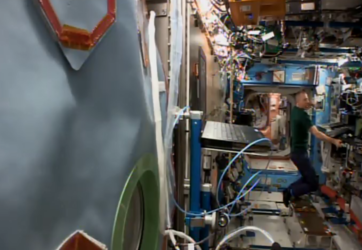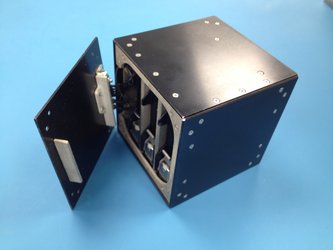Accept all cookies Accept only essential cookies See our Cookie Notice

About ESA
The European Space Agency (ESA) is Europe’s gateway to space. Its mission is to shape the development of Europe’s space capability and ensure that investment in space continues to deliver benefits to the citizens of Europe and the world.
Highlights
ESA - United space in Europe
This is ESA ESA facts Member States & Cooperating States Funding Director General Top management For Member State Delegations European vision European Space Policy ESA & EU Space Councils Responsibility & Sustainability Annual Report Calendar of meetings Corporate newsEstablishments & sites
ESA Headquarters ESA ESTEC ESA ESOC ESA ESRIN ESA EAC ESA ESAC Europe's Spaceport ESA ESEC ESA ECSAT Brussels Office Washington OfficeWorking with ESA
Business with ESA ESA Commercialisation Gateway Law at ESA Careers Cyber resilience at ESA IT at ESA Newsroom Partnerships Merchandising Licence Education Open Space Innovation Platform Integrity and Reporting Administrative Tribunal Health and SafetyMore about ESA
History ESA Historical Archives Exhibitions Publications Art & Culture ESA Merchandise Kids Diversity ESA Brand Centre ESA ChampionsLatest
Space in Member States
Find out more about space activities in our 23 Member States, and understand how ESA works together with their national agencies, institutions and organisations.
Science & Exploration
Exploring our Solar System and unlocking the secrets of the Universe
Go to topicAstronauts
Missions
Juice Euclid Webb Solar Orbiter BepiColombo Gaia ExoMars Cheops Exoplanet missions More missionsActivities
International Space Station Orion service module Gateway Concordia Caves & Pangaea BenefitsLatest
Space Safety
Protecting life and infrastructure on Earth and in orbit
Go to topicAsteroids
Asteroids and Planetary Defence Asteroid danger explained Flyeye telescope: asteroid detection Hera mission: asteroid deflection Near-Earth Object Coordination CentreSpace junk
About space debris Space debris by the numbers Space Environment Report In space refuelling, refurbishing and removingSafety from space
Clean Space ecodesign Zero Debris Technologies Space for Earth Supporting Sustainable DevelopmentLatest
Applications
Using space to benefit citizens and meet future challenges on Earth
Go to topicObserving the Earth
Observing the Earth Future EO Copernicus Meteorology Space for our climate Satellite missionsCommercialisation
ESA Commercialisation Gateway Open Space Innovation Platform Business Incubation ESA Space SolutionsLatest
Enabling & Support
Making space accessible and developing the technologies for the future
Go to topicBuilding missions
Space Engineering and Technology Test centre Laboratories Concurrent Design Facility Preparing for the future Shaping the Future Discovery and Preparation Advanced Concepts TeamSpace transportation
Space Transportation Ariane Vega Space Rider Future space transportation Boost! Europe's Spaceport Launches from Europe's Spaceport from 2012Latest
Horizons science: installing ICE Cubes
Thank you for liking
You have already liked this page, you can only like it once!
The International Commercial Experiments service – ICE Cubes for short – facility provides commercial access to microgravity offering faster, easier and more affordable access to research in space.
ESA astronaut Alexander Gerst installed the first experiment cubes in the facility that is housed in Europe’s research laboratory Columbus, part of the International Space Station.
The International Space University is the first customer to run experiments in ICE Cubes. The plug-and-play cubes need only to be slotted into the facility and the data collection can begin.
The first cube houses an experiment that is continuing research on methane-producing microorganisms to see how they survive in space conditions. In the longer term, the knowledge gained could lead to these microorganisms for bio-mining of asteroids to produce methane to fuel future space missions.
The second International Space University experiment is an interactive art installation that brings space to Earth and back again, highlighting the versatility of the ICE Cubes facility. The cube contains a kaleidoscope linked to a ground installation that is activated by the pulse of participants. The images are then beamed down to the installation on Earth, thanks to ICE Cubes’ unique 24-hour accessibility.
Researchers can access the data from their payloads at any time via a dedicated mission control centre at Space Applications Services’ premises in Sint-Stevens-Woluwe, Belgium. Clients can connect to their experiment from their own location over internet to read the data and even send commands directly.
For more information on ICE Cubes, visit the website to see how you can fly your experiment.
-
CREDIT
ESA - European Space Agency -
LICENCE
ESA Standard Licence
-
Interior Shot
-
-
-
-
-
-

ICE Cubes installation

ICE Cubes facility

ICE Cubes experiment unit

Ice Cubes control centre















 Germany
Germany
 Austria
Austria
 Belgium
Belgium
 Denmark
Denmark
 Spain
Spain
 Estonia
Estonia
 Finland
Finland
 France
France
 Greece
Greece
 Hungary
Hungary
 Ireland
Ireland
 Italy
Italy
 Luxembourg
Luxembourg
 Norway
Norway
 The Netherlands
The Netherlands
 Poland
Poland
 Portugal
Portugal
 Czechia
Czechia
 Romania
Romania
 United Kingdom
United Kingdom
 Slovenia
Slovenia
 Sweden
Sweden
 Switzerland
Switzerland


























